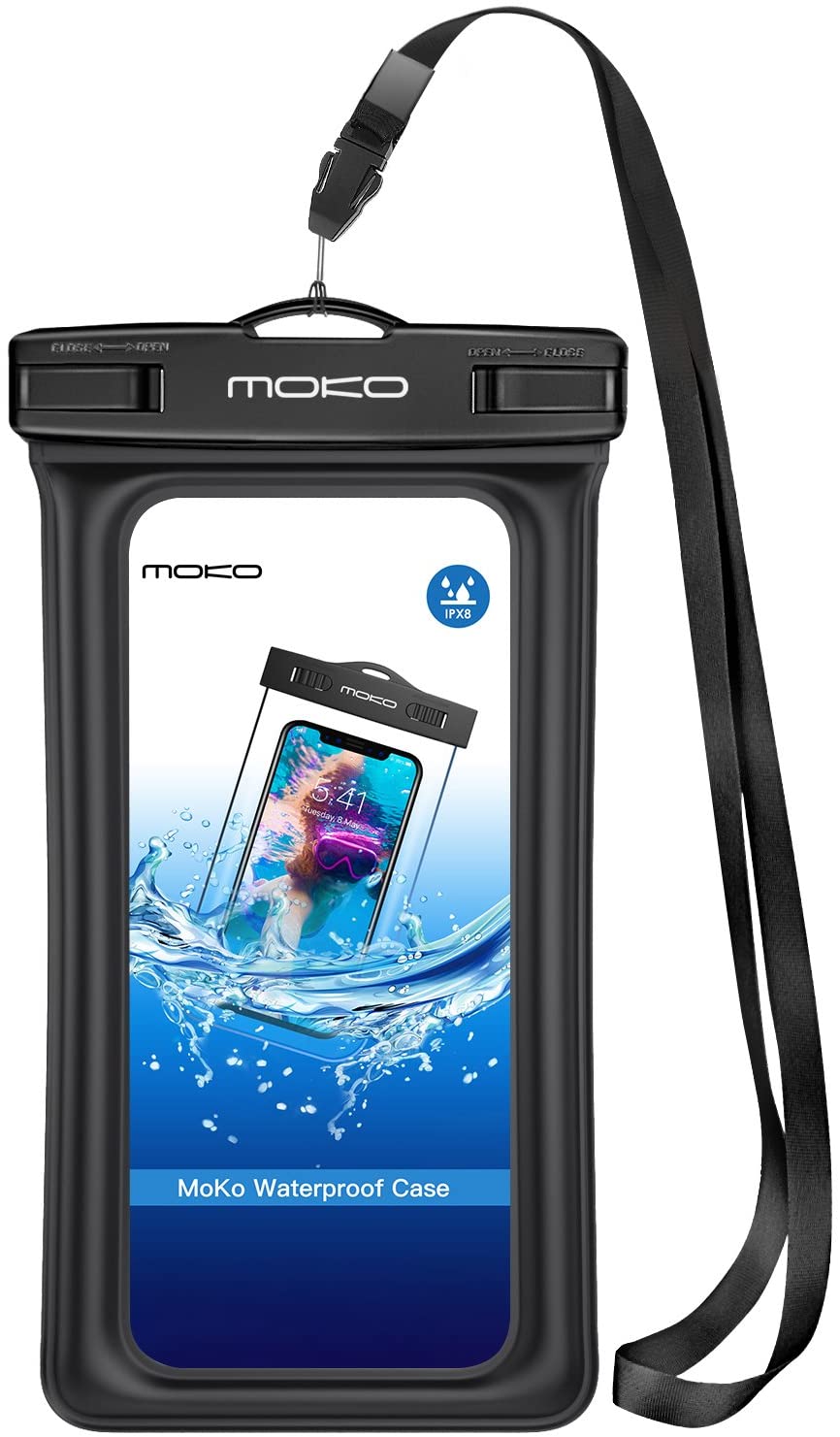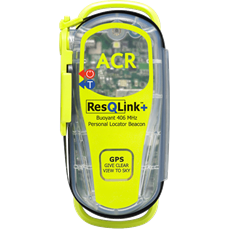There are a lot of Emergency Communications Electronics available for the paddler
It makes a lot of sense for paddlers to carry some kind of electronic communication device for the additional level of safety they can provide, especially now with their compact size and affordability. If you’re in a life-threatening situation the advantage of being able to call for help and know that your distress call has been received, is priceless.
In the early days of paddling, emergency communication for paddlers consisted of a whistles and flares. Contact between paddler was pretty much limited to shouting and waving paddles. These days, pretty much everyone owns a cell phone, and satellite devices such as PLB’s (personal locator beacons) and satellite messengers, offer the ability to send distress calls from anywhere in the world. If you are serious about your safety on the water you should consider carrying at least one of these devices with you, but before you rush out and buy one you should look at the advantages and limitations of each type of device.
Cell Phones
Almost everyone has a cell phone. Unfortunately, phones on the water, particularly salt water have some serious limitations, largely due to their lack of waterproofing, though today many phones are being made with some level of water resistance. While you may still want to carry one with you, you should consider carrying another kind of device as well.
Pros:
-
Pretty much everyone already has one.
- Generally work well in populated centers.
- Allows you to quickly call for help with 911.
- 2-way communication with rescuers.
- Access to weather, tide and current information.
Cons:
- Cell range is limited at best and not reliable depending on where you are.
- Most phones requires a waterproof case, and very importantly, one that allows you to use it while the phone is in the case. Even if your phone is rated as waterproof, you should still consider carrying it in a waterproof case, it should be tethered so it can’t be dropped.
- Limited Battery Life.
Tip: If you are having trouble getting a 911 call out due to sketchy cell service, try texting. Texting, unlike a phone call only requires an instant of contact with intermittent cell signals to get the message out.
VHF Marine Radios
VHF Marine Radios are an excellent choice as an emergency signalling device. However, there are a few things to consider before you run out and buy one as there is more to owning a VHF radio than just purchasing it.
- In Canada, you must have a Restricted Operator’s Certificate Marine or ROC(M) to transmit on any marine radio, whether a handheld or a fixed set. Simply listening to a broadcast does not require a certificate. So, you will need to learn basic radio procedures, the phonetic alphabet, and regulations and penalties for improper use. Industry Canada has delegated the examination and administration of the ROC-M certification program to Canadian Power and Sail Squadrons (CPS). You can either take a VHF course or study the “Canadian Power & Sail Squadron (CPS) Maritime Radio Course manual”. You then take a test with an approved registered examiner, who will send in your application to get your ROC(M). Your license is good for life.
Pros
- Emergency calling via the channel 16 emergency channel
- One button emergency calling with the DSC (Digital Selective Calling) emergency key (Not all handheld VHF radios have this feature). If your radio is properly registered, this feature will also let the rescue services know who is calling and, if your radio is equipped, your exact GPS location.
- 2-way communication with other paddlers, boaters, marinas, coast guard, & rescue centres.
- The ability to listen to and monitor marine weather forecasts.
- Easy to carry. They are relatively small compact devices depending on the model and features you choose
- Your call can be picked up by multiple sources. Around major centers, there are lots of boats and stations that may pick up your call, meaning that rescue could be very close.
- They are waterproof (VHF radios have different waterproof/submersible ratings depending on the model).
- Some models float if dropped in the water.
- Reasonably priced depending on the model and features you choose.
Cons
- You can’t just buy and use them, they require training and licensing.
- Handheld units for kayakers are relatively low powered, around 5-6watts, (to put that in perspective, an average boat mounted VHF is 25 watts), and with a kayaker’s very low position in the water the effective range of a handheld VHF is only around 5 nautical miles, or realistically, line-of-site. If you are tucked away in remote areas without much boat traffic around, there may be no one to hear your call.
- You need to monitor and check your batteries to make sure they are not dead before you set out. It is very easy to accidentally leave the radio on, leading to dead batteries when you need it.
- In spite of the waterproof/submersible ratings marine radios have, it is still a good idea to keep them in a waterproof bag that still allows you to use the radio. Long-term exposure to salt water can lead to damaging corrosion.
Personal Locator Beacons (PLB’s)
These devices are intended for life-threatening emergencies only. They incorporate three levels of integrated signal technology – GPS positioning, a 406 MHz signal (most transmit at 5 watts), and 121.5 MHz homing capability – the PLB’s will quickly and accurately relay your position to a worldwide network of search and rescue satellites financed by international governments. When rescue parties get close they can zero in on the 121.5 MHz homing signal.
So, if your needs are strictly the most reliable emergency beacon available, PLB’s are the best choice.
Warning: If you use them because you are lost on a back road with a flat tire, you could find yourself in a world of trouble.
Pros
- Coverage is world-wide using government-funded satellite and rescue coordination centers.
- Each device has a unique coded signal, so if you’ve registered it properly, SAR personnel will know who you are and the type of vessel they are looking for. (Important: Your PLB must be registered with the appropriate national authority. Failure to do so may lead to a delayed SAR response and may be unlawful. Make sure you read your owners manual which will tell you how to go about the registration process).
- Simple to activate, making them easy to use for stressed or injured users.
- Along with your distress signal, PLB’s transmit a precise GPS location and then continues to transmit a homing signal.
- No subscription fees
- Waterproof
- Most Float, but they should always be tethered
Cons
- PLB’s don’t allow you to specify a degree or type of emergency.
- They don’t let you know if your signal was received.
- Batteries will need to be replaced after 5-6 years, which may run around $150.00.
Satellite messengers
These relatively inexpensive devices broadcast to commercial satellites rather than government SAR satellites. The signal is sent to a commercially funded Emergency Response Center, which will then alert the appropriate SAR rescue agencies worldwide. The huge advantage these clever little devices offer beyond sending distress calls, is they allow communication from pretty much anywhere in the world. This provides a whole new level of security and peace of mind not only for the adventurer but for their loved ones left at home.
Pros
- The advantage satellite communicators have that PLBs don’t, is that you can email or text messages to advise of your location, or you can send an email to designated people in situations where you need to be bailed out, but really don’t need to instigate a full-scale emergency response.
- You can activate a tracking feature that updates your location at regular intervals.
- Waterproof
- Simple to activate an SOS
- Some models can be used for regular communication via email or text
- some models allow 2 way communication such as the inReach SE+
Cons
- The range of coverage of satellite messengers is a little more limited and they are lower powered devices than PLB’s, but as long as you can get a clear view of the sky, usually not a problem for folks on the water, they will still work almost anywhere on the planet. However, if you are down in narrow canyons and under forest cover, these devices may not get a signal out.
- Require activation (with fee) and monthly or yearly subscription fees
- Most don’t float so should be tethered
Satellite messengers come in a couple of variations. I like to classify them as ones that will transmit a message one-way and others that can provide two-way communication. All satellite communicators are subscription based. Once purchased, they must be activated and require a service plan of some kind which can be paid yearly or monthly.
Conclusion
Whatever electronic emergency signalling device you choose, you will be able to paddle and explore with a little more confidence and peace of mind. Keep in mind they are not a substitute for common sense, preparation and good paddling skills. Any electronic device is not infallible, so don’t forget those flares.
There is a level of responsibility that goes along with using the emergency features of any of these devices. Just because you are cold, wet and tired doesn’t constitute an emergency.
Safe Paddling!!
Bruce Holland – You can also catch me at Ourhomehas6wheels.com or Brakelightfoto.com





